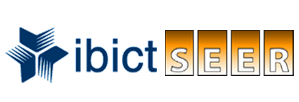MEASURING THE SOCIAL WORLD
DOI:
https://doi.org/10.30611/2020n16id43811Keywords:
index, indicator, measurement, PISA, educational management, globalizationAbstract
Quantification is no longer a practice of natural science only but has become part of human sciences and everyday life as well. As a direct measurement, which fits the axiomatic of the representational theory of measurement, is mostly infeasible in the social sciences, indicators are used and frequently aggregated to indexes. The index scores can be used to construct a ranking of the units (HDI, PISA). Measurement level and meaning of the data remain often unknown (pseudo-metrical scaling). Furthermore many variables in the field of education are not quantifiable. In the course of globalization and international competition, an indicator system for educational quality measurement (PISA, TIMMS) and goal achievement (Education for All, Millenium Development Goals, Sustainable Development Goals), was established and exerts an increasing impact on national educational systems.The main concerns of indicator-based steering are its methodological limitations and the transformation from a descriptive information base to a normative control system.
Downloads
References
Cicourel, Aaron V. (1964). Method and measurement in sociology. New York: Free Press of Glencoe.
Felbinger, Sabine (2010). Messtheoretische Grundlagen. LMU München: Institut für Statistik. http://thomas.userweb.mwn.de/Lehre/wise1011/SeminarSozi/SabineFelbinger.pdf.
Hand, David J. (1996). “Statistics and the theory of measurement”. Journal of the Royal Statistical Society, Series A, 159 (3), 445-492.
Klees, Steven J.; Stromquist, Nelly, P.; Samoff, Joel; Vally, Dalim (2019). The 2018 World Development Report on Education: A Critical Analysis. Development and Change, 50 (7), 1-18. DOI: 10.1111/dech.12483.
Jarry R., Roberto & Pfeiffer, Dietmar K. (Col.). 2018. Pesquisa Social. Métodos e Técnicas. Editora Atlas: São Paulo.
Llavador, José Beltrán e Aguls, Alícia Villar (2010). Avaliação em Educação: algumas considerações a respeito dos indicadores” Educação & Linguagem, 13 (21), 132-149.
Matthes, Joachim. The Operation Called „Vergleichen‟ (1992). Soziale Welt, Göttingen, Vol. especial, n. 8, p. 75-99.
Mau, Steffen (2018). Das metrische Wir. Über die Quantifizierung des Sozialen. Bpb: Bonn Meyer, Heinz-D. & Bemavot, Aaron (eds.) (2013). PISA, Power, and Policy: the emergence of global governance. Oxford: Symposium.
Meyer, John W. & Rowan, Brian (1977). Institutionalized Organizations: Formal Structure as Myth and Ceremony. American Journal of Sociology, 83 (2), 340-363.
Meyer, John W. & Rowan, Brian (1978). The Structure of Educational Organizations. In Marshall W. Meyer (ed.): Environments and Organizations. San Francisco: Jossey-Bass.
Ministério de Educação. Ideb - Apresentação. http://portal.mec.gov.br/secretaria-deeducacao -basica/programas-e-acoes?id=180.
OECD (2019). Education at a Glance 2019. OECD Indicators. OECD Publishing: Paris. https://doi.org/10.1787/f8d7880d-en.
OECD (2019), PISA 2018 Results (Volume I): What Students Know and Can Do. OECD Publishing: Paris. https://doi.org/10.1787/5f07c754-en.
Parreira do Amaral, Marcelo (2011). Emergenz eines Internationalen Bildungsregimes? International Educational Governance und Regimetheorie. Münster-New York: Waxmann.
Pasquali, Luiz. (2009), Psicometria. Revista da Escola de Enfermagem da USP, 43, 992-999. http://www.revistas.usp.br/reeusp/article/view/40416.
Pfeiffer, Dietmar K. & Püttmann, Carsten (2018). Einführung in die Methoden empirischpädagogischer Forschung4. Münster-New York: Waxmann.
Pfeiffer, Dietmar K. (2017). As medidas da educação. Medição e gestão mediante indicadores. Revista de la Asociación de la Sociología de la Educación, 10 (2), 141-155.
Pogliano, Claudio (1988). La misura e l‟ordine. L‟aurora del pensiero quantitativo. Belfagor XLIII (3), 255-276.
Rose, Pauline (2015). Is a global system of international large-scale assessments necessary for tracking progress of a post-2015 learning target? Compare: A Journal of Comparative and International Education, 45/3, 486-4890. https://doi.org/10.1080/03057925.2015.1027514.
Rost, Jürgen (2005). Messen wird immer einfacher. ZA-Information, 56, 6-7.
Rohwer, Anja & Hülsewig, Oliver (2011): Länderrankings: Zu welchen Ergebnissen kommt die neuere Forschung? In: Rankings und Indikatoren: Hilfreiche Kennzahlen oder Verkürzungen mit fatalen Folgen? Wirtschaftsdienst, 91 (11), 735-759. DOI: 10.1007/s10273-011-1295-6.
Saint-Mont, Uwe (2011). Statistik im Forschungsprozess. Berlin-Heidelberg: Springer Verlag.
Soligo, Valdecir (2012). Indicadores: Conceito e complexidade do mensurar em estudos de fenômenos socias. Estudos em Avaliação Educacional, 23, n.52, 15-25.
Spoerhase, Carlos (2014). Das Maß der Potsdamer Garde. Die ästhetische Vorgeschichte des Rankings in der europäischen Literatur-und Kunstkritik. In: Wilfried Barner et al. (eds): Jahrbuch der Deutschen Schillergesellschaft (58). Berlin: de Gruyter.
Siche, Raúl, et al. (2007). Índices versus Indicadores. Precisões conceituais na discussão da sustentabilidade de países. Ambiente e Sociedade, Vol. X (2), 137-148.
Van Suntum, Ulrich (2011). Keine Scheindebatten führen. In: Rankings und Indikatoren: Hilfreiche Kennzahlen oder Verkürzungen mit fatalen Folgen? Wirtschaftsdienst, 91/11, 735-749. http://dx.doi.org/10.1007/s10273-011-1295-6.
Townsend, James D. & Ashby, F. Gregory (1984). Measurement Scales and Statistics: The Misconception Misconceived. Psychological Bulletin, 96, 394-401.
World Bank (2018). World Development Report 2018. Learning to realize education's promise. Washington, DC: World Bank.
Downloads
Published
Issue
Section
License
Authors who publish in this journal agree to the following terms:
- Authors retain the copyright and grant the journal the right of first publication, with the work simultaneously licensed under the Attribution-NonCommercial-NoDerivatives 4.0 International (CC BY-NC-ND 4.0) License, which allows the non-commercial sharing of work, without modifications and with acknowledgment of authorship and initial publication in this journal.
- Authors are authorized to take additional contracts separately, for non-exclusive distribution of the version of the work published in this journal (eg publish in institutional repository or as a book chapter), with acknowledgment of authorship and initial publication in this journal.
- Authors are allowed and encouraged to publish and distribute their work online (eg in institutional repositories or on their personal page) at any point before or during the editorial process, as this can generate productive changes as well as increase the impact and citation of published work (See The Free Access Effect).



















